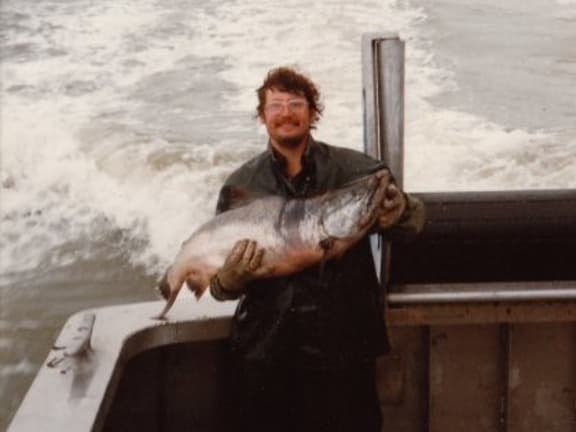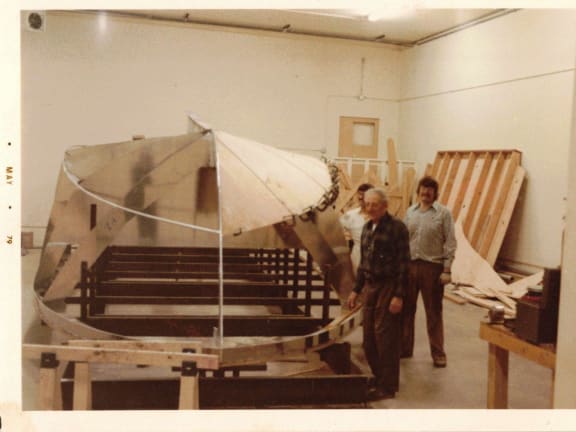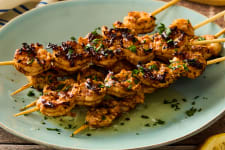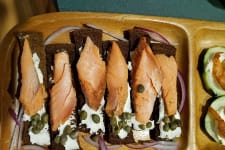
A Kallenberg Family Story About Science, Salmon, and Soul
May 8th, 2025Walt Kallenberg: A Spiritual Being, Having a Human Experience
A couple weeks ago, we celebrated Robert C. Kallenberg — my husband Arron’s grandfather — who, along with many passionate, dedicated individuals of the time, helped lay the foundation for sustainable fishing in Alaska.
This week is a celebration of Walt Kallenberg, my late father-in-law, a man composed of equal parts lightness and depth, someone who was both a fount of playful whimsy and a profound reservoir of cosmic spirit.
Walt lived through one of the most radical transformations in the history of Alaskan seafood: the rise of industrial salmon farming. In his lifetime, the price of wild salmon underwent a dramatic collapse as cheap, farmed salmon flooded the markets, posing an existential threat not just to wild fish, but to entire communities built around their harvest. Even as global forces shifted the tides, giving up fishing wasn’t an option for Walt. He worked hard to keep food on the table for his family. He stayed on deck, adapting, enduring, and staying true to the life he loved.

Caption: Walt hoisting up a very large salmon in his arms, with a prize-winning smile.

When the collapse in wild salmon prices hit hardest, he did whatever it took to support his family and keep the Kallenberg fishing operation afloat. He understood that preserving the culture, connection, and lived experience of fishing — not just the economics — was essential to sustaining it for future generations.

Caption: Walt with baby Arron in his arms, on board the Mary K.
In the winters, he worked as a mechanical engineer in Anchorage on some of the state’s most complex and ambitious projects. To make it work, he slept in his car during the week, then drove 220 miles home to Homer, Alaska, every weekend to be with his kids. He used to joke, “My driveway is 220 miles long.” It wasn’t easy, but for him, the sacrifice was worth it — a way to stay close to his family while keeping his fishing life alive. That season of life — and many others like it — tested his resilience, but never broke his spirit.
He spent decades fishing Bristol Bay aboard the Mary K, the aluminum drift gillnetter he designed and built. He had grown up fishing those same waters with his father on the Polly K — a boat named after his mother — and the Mary K became his temple. It was where he taught his son about the importance of fishing at a soul level, mentored deckhands, and co-created an entire mythology called Nez — “zen” spelled backward — a playful but profound philosophy of life lived at sea.

He was as passionate about engineering as he was about the magic and mystery of the universe. He made even the simplest moments feel like a celebration — whether building robots with his grandkids or crafting his signature “salmon birthday cake” with meticulous care and a little spatula he adored (and which I still use in my kitchen today).
When Arron launched Wild Alaskan in 2017, Walt kept a watchful eye on both the company and his son, but never overstepped his role as a father and mentor. He offered advice when asked, with the understanding that Wild Alaskan was Arron’s to start and lead, that it was his son’s contribution to the family legacy. In the last season of his life, Walt humbly offered his engineering services, acting as the company’s Facilities Engineer just as the company began to scale its processing capacity. For Walt, vertical integration wasn’t just about technology or efficiency — it was about values. He brought both his engineer’s mind and his fisherman’s heart to everything he did.

Caption: Walt and Arron on the Mary K, sporting matching WAC hats and jackets.
He understood how supply chains shape communities, how infrastructure affects ecosystems, and how every link in the system — from harvester to member — reflects a deeper web of respect. As he often said, “You don't exchange energy in the universe without respect.” He believed the same applied to fish, to people, and to the planet. And he raised his son to think that way, too.
Walt was a bridge between generations, a connection between the foundation built by his father and the future his son is now stewarding. His life — filled with wild fish, open skies, and deep questions — is woven into the heart of our mission. I loved him so much, and I still feel his presence in quiet moments — in the wind, on the water, in the kitchen, and certainly in the work we carry forward. We will always miss him deeply. And we honor his memory and legacy every time we tell the story of a fish and the people behind it.
Live Wild,
Monica
Pictured above: A faded photo of Henry Kallenberg (standing) and Walt Kallenberg (seated), holding a model of the Mary, K, circa 1977.





